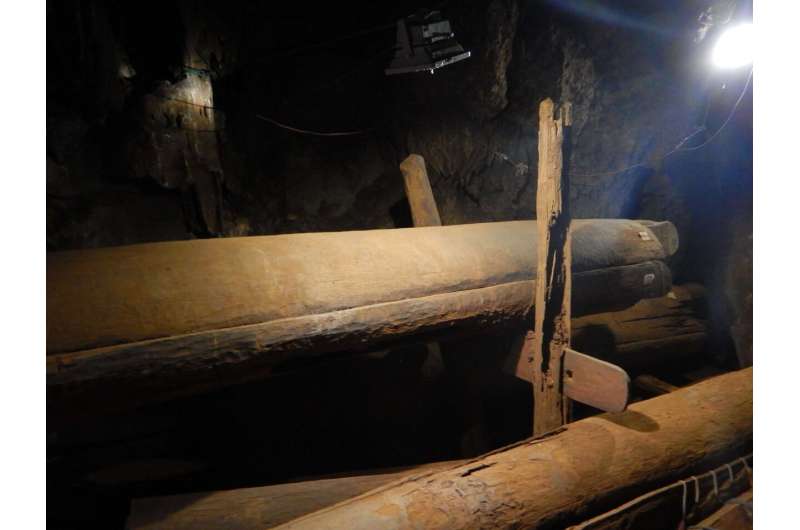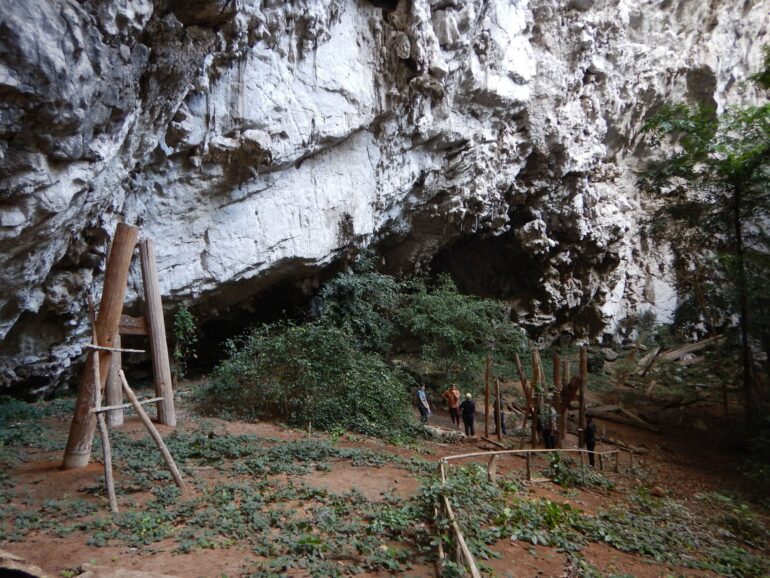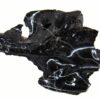Deciduous and evergreen forests dominate the limestone karst formations of the northwestern highlands of Thailand. A vast number of caves and rock shelters intersperse the mountains.
In over 40 such caves in Mae Hong Son province, large wooden coffins mounted on stilts, dating between 2,300 and 1,000 years ago, can be found. During the Iron Age period, each of these up to several-meter-long coffins was crafted from a single teak tree and features refined carvings of geometric, animal- or human-like shapes at the handles of both ends.
This archaeological assemblage has been studied for more than two decades by members of the Prehistoric Population and Cultural Dynamics in Highland Pang Mapha Project, led by Professor Rasmi Shoocongdej, from the Department of Archaeology, Faculty of Archaeology, Silpakorn University.
“Our research examines the relationship between humans and their environments in the seasonal tropics. One crucial aspect is the exploration of the social structure of these prehistoric communities, as well as explaining their connections with other pre-Neolithic, Neolithic and post-Neolithic groups in this region,” says Shoocongdej, an archaeologist and senior author of the study.

In Thailand’s Iron Age Log Coffin culture, coffins were made from a single teak tree and decorated with refined carvings of geometric or animal shapes on both ends. © Selina Carlhoff
To understand the genetic profile of the Log Coffin-associated communities, and the connection of individuals buried in different caves, an interdisciplinary team of researchers from Germany and Thailand has analyzed the DNA of 33 ancient individuals from five Log Coffin sites. The genomes recovered from the ancient individuals allow the first detailed study of the structure of a prehistoric community from Southeast Asia. The paper is published in the journal Nature Communications.
“This project illustrates how ancient DNA can contribute to our understanding of past communities, their every-day life, and their cross-regional connections,” says first author Selina Carlhoff, a researcher in the Department of Archaeogenetics at the Max Planck Institute for Evolutionary Anthropology.
Complex genetic landscape in post-Neolithic mainland South East Asia
DNA preservation conditions in tropical regions are challenging and limit ancient population genetic studies from Southeast Asia. Most studies were limited to single individuals or small groups representing a country and period, and identifying only broad patterns, such as genetic admixture of farmers from the Yangtze River valley in southern China with the local Hòabìnhian hunter-gather-associated gene pool during the pre-Neolithic.
The current study identifies two separate farmer-associated ancestries in the Log Coffin-associated individuals: One connected to the Yangtze River Valley, and another to the Yellow River valley in China.
While previously published individuals from Myanmar, Laos and Vietnam also carry the Yellow River-related ancestry, it was absent in Bronze and Iron Age individuals from Ban Chiang in northeastern Thailand. These genetic differences mirror cultural differences between the two regions, such as mortuary practices and diet, and point towards separate influence spheres and connections to separate initial migration routes during the Neolithic period.
“Our results contribute to the emerging picture of a complex genetic landscape in post-Neolithic mainland Southeast Asia; however, this study provides successful genetic results from samples in limestone caves from the northwestern highlands of Thailand. Future studies of samples



